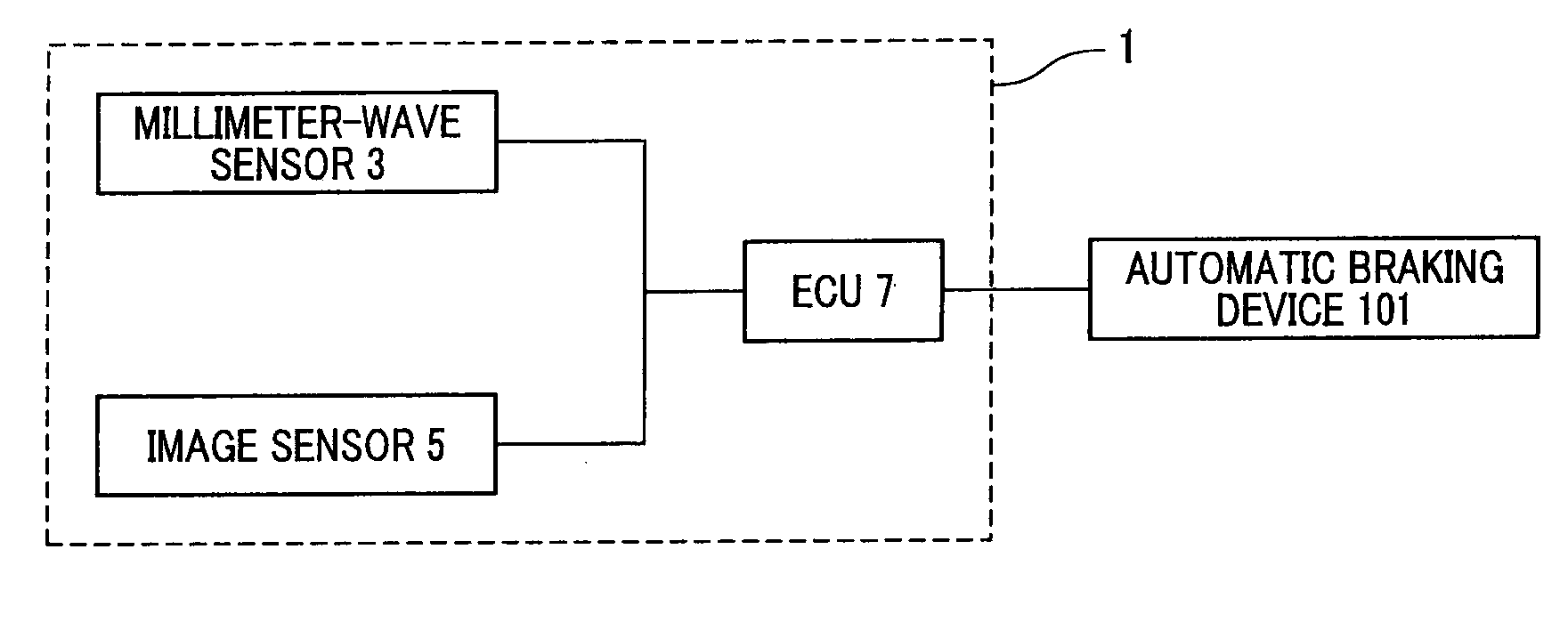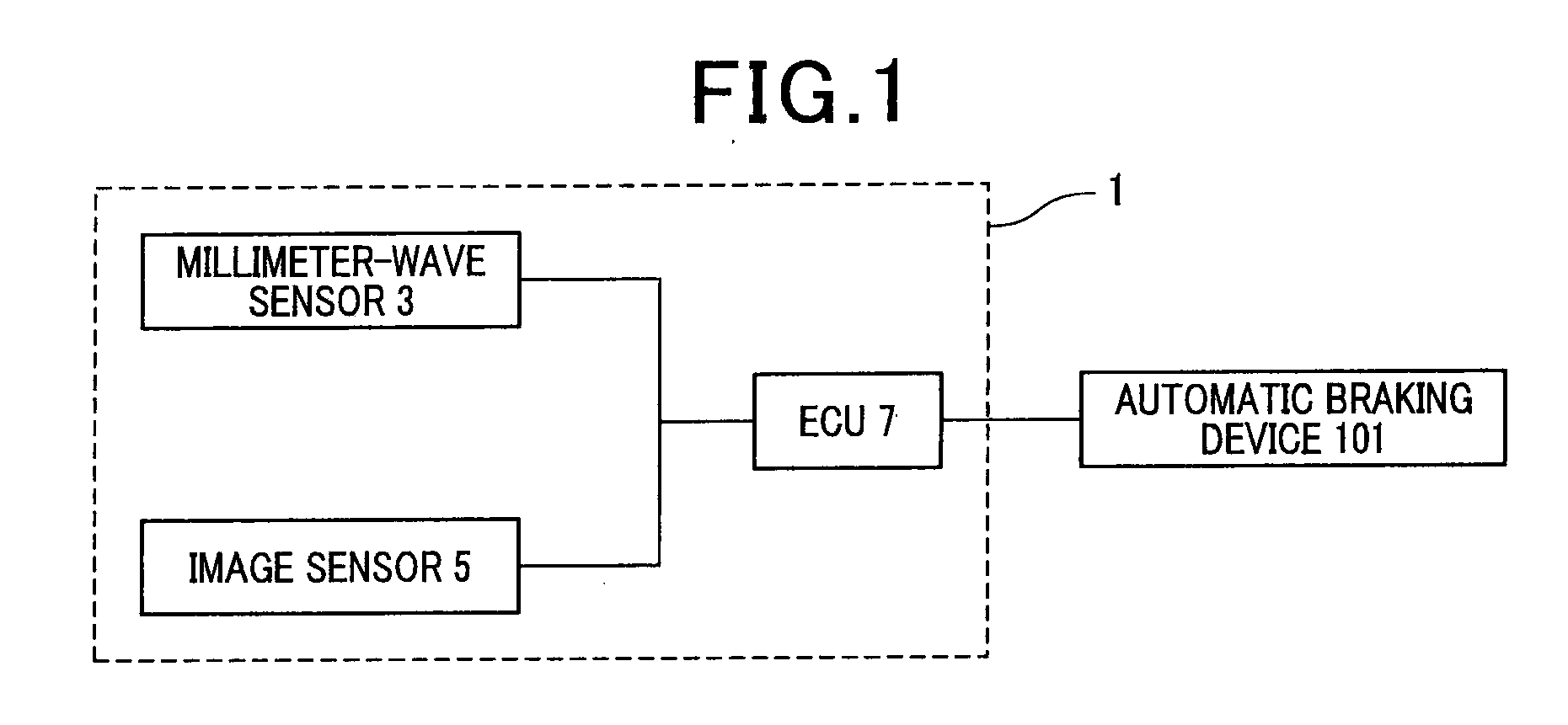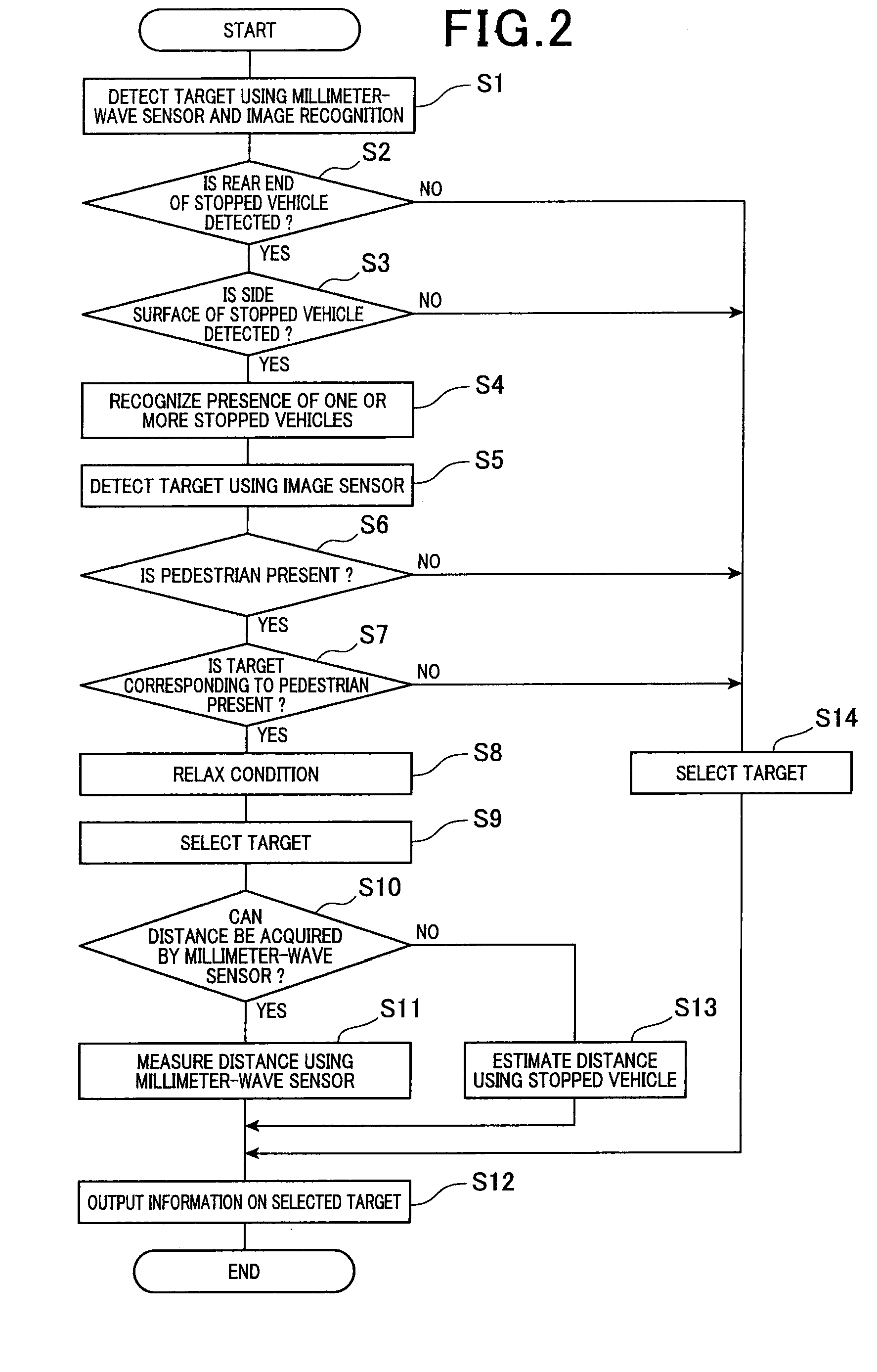Target detecting device for avoiding collision between vehicle and target captured by sensor mounted to the vehicle
a technology of detecting device and target, which is applied in the direction of measuring device, using reradiation, instruments, etc., can solve the problem of weak intensity of reflected waves from pedestrians
- Summary
- Abstract
- Description
- Claims
- Application Information
AI Technical Summary
Benefits of technology
Problems solved by technology
Method used
Image
Examples
first embodiment
1. Configuration of a Target Detecting Device
[0026]The first embodiment of the present invention will be described with reference to FIG. 1 to FIG. 4. In FIG. 1, the configuration of the target detecting device is shown. The target detecting device1 is an on-board device that is mounted in a vehicle. The target detecting device 1 detects a target by performing a process described hereafter. The target detecting device 1 then outputs information on the target, such as the type of target, the orientation of the target relative to a reference vehicle, and the distance from the reference vehicle to the target. In the present application, the vehicle in which the target detecting device 1 is mounted is referred to as a “reference vehicle”.
[0027]The target detecting device 1 includes a millimeter-wave sensor 3, an image sensor 5, and an electronic control unit (ECU) 7. The millimeter-wave sensor 3 is configured as a so-called “millimeter-wave radar” to which a frequency modulated continuo...
second embodiment
1. Configuration of a Target Detecting Device
[0056]The configuration (hardware) of a target detecting device according to the second embodiment is basically the same as that of the target detecting device 1 according to the first embodiment. Differences will be described hereafter.
[0057]The target detecting device 1 according to the second embodiment includes the ECU 7. In a manner similar to that according to the first embodiment, the ECU 7 holds, in advance, patterns for image recognition. The patterns correspond with numerous types of targets, such as vehicles, the entire body of a pedestrian, and the upper body of a pedestrian. The ECU 7 selects 100 patterns from the patterns that are being held. The ECU 7 then performs image recognition by comparing each of the 100 patterns with the image acquired by the image sensor 5. Among the 100 patterns, the number P of patterns of the upper body of a pedestrian is normally 10. However, as described hereafter, the number P of patterns of ...
third embodiment
[0084]The configuration of the target detecting device 1 and the process performed by the target detecting device 1 according to a third embodiment are basically similar to those according to the second embodiment. However, there are partial differences. The difference will mainly be described hereafter. The target detecting device 1 according to the third embodiment performs a process shown in the flowchart in FIG. 6. The process differs from that according to the second embodiment in that the above-described processing operation at Step 55 is not included. The processing operations at Step 101 to Step 111 correspond with Step 51 to Step 54 and Step 56 to Step 62 according to the second embodiment.
[0085]In other words, according to the third embodiment, the value of N remains set to the normal value (3) even for image recognition of the area A1. The area A1 is an area in the image acquired by the image sensor 5 that overlaps with the stopped vehicle 105. The target detecting device...
PUM
 Login to View More
Login to View More Abstract
Description
Claims
Application Information
 Login to View More
Login to View More - R&D
- Intellectual Property
- Life Sciences
- Materials
- Tech Scout
- Unparalleled Data Quality
- Higher Quality Content
- 60% Fewer Hallucinations
Browse by: Latest US Patents, China's latest patents, Technical Efficacy Thesaurus, Application Domain, Technology Topic, Popular Technical Reports.
© 2025 PatSnap. All rights reserved.Legal|Privacy policy|Modern Slavery Act Transparency Statement|Sitemap|About US| Contact US: help@patsnap.com



